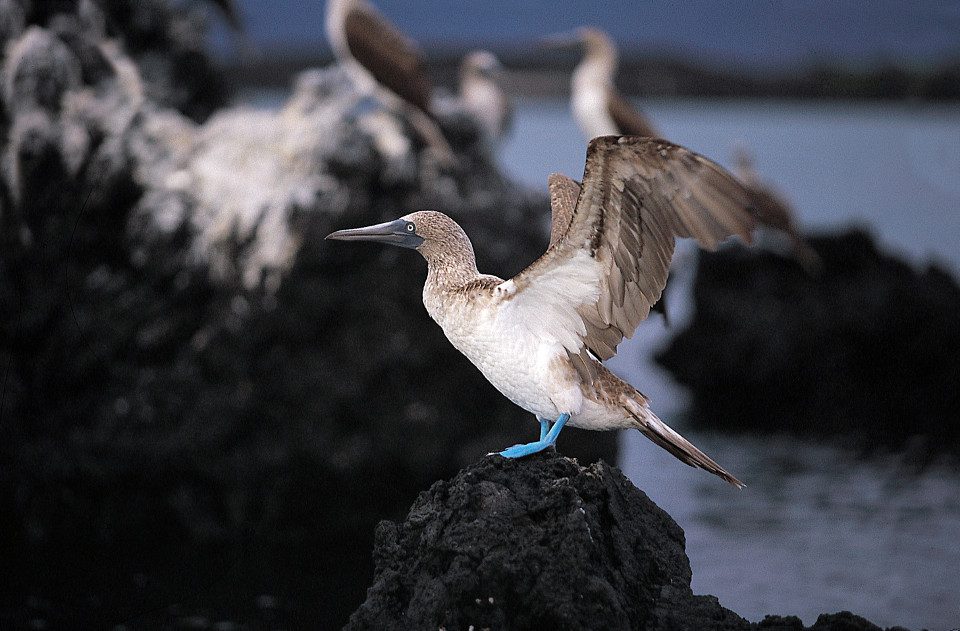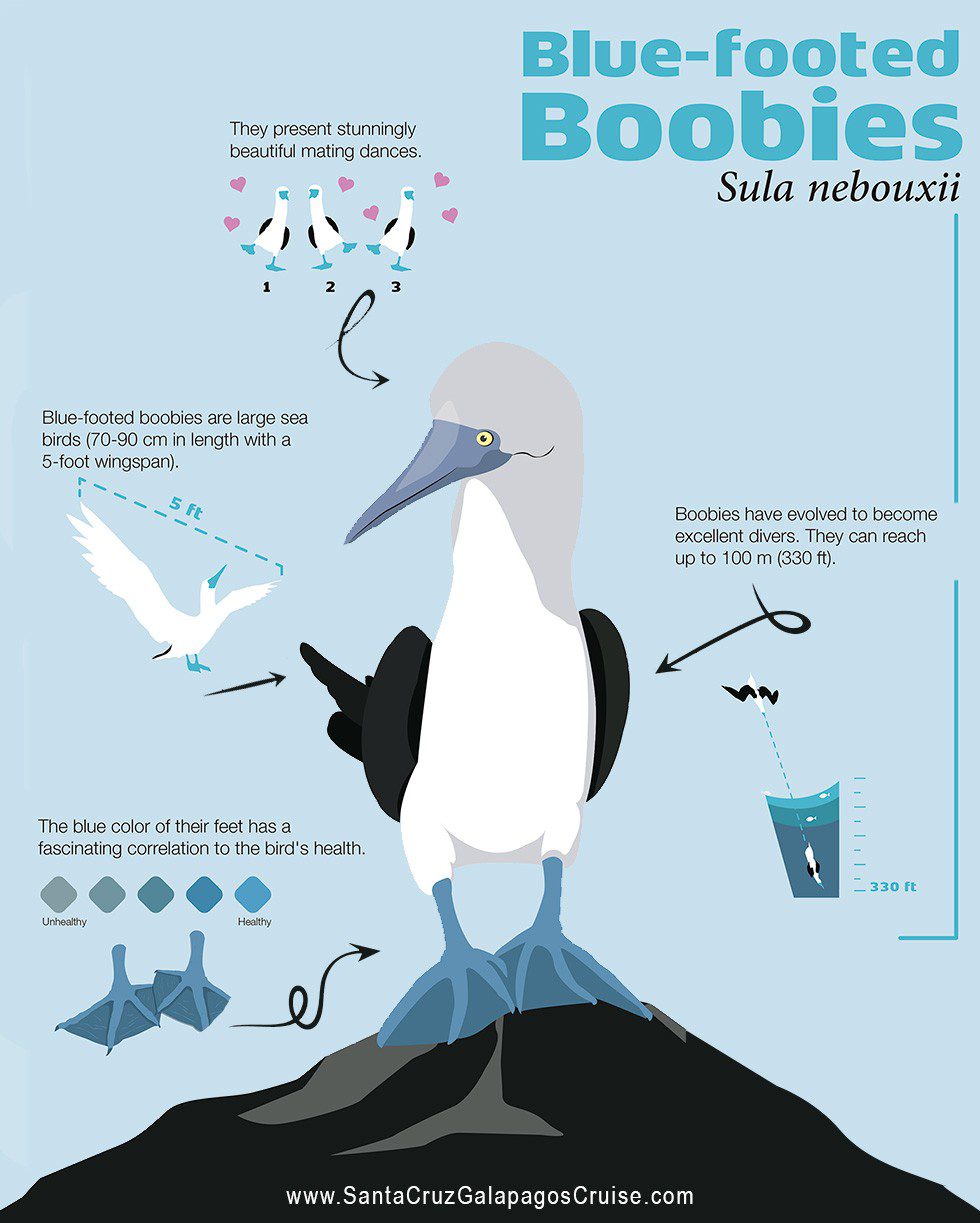General Description
Blue-footed boobies are large sea birds (70-90cm in length with a five-foot wingspan) that breed along the eastern coast of the Pacific Ocean, from southern California to Peru. They are more widely known for their dramatic plunge-diving, brilliant blue feet, and the stunning mating dances that hopeful males display for prospective females. These blues footed boobies are certainly the most famed and frequently seen of the Galapagos birds, yet of all the boobies the blue-footed actually has the smallest population and it has recently been discovered that their numbers are decreasing.
TALK TO A DESTINATION EXPERT

Diego Zapata

Rosa Mena

Sandy Lara

Diego Zapata

Rosa Mena

Sandy Lara
It is relatively simple to distinguish the sexes of the Blue Footed Booby by both sight and sound. Although it is only the effect of additional black pigmentation around the pupil, the eye pupil of the female blue-footed booby appears to be larger than that of the males. Their calls, on the other hand, are perhaps easier to distinguish as the male emits a high whistling sound whereas the female has a low honking call. Mates communicate with each other by calling and are actually able to recognize one another based on these sounds as each individual has its own particular call. The female blue-footed booby also tends to have darker blue feet and weighs slightly more than the male.

Blue-Footed Booby Evolution
The blue-footed booby (Sula nebouxii) traces its roots back to the tropical and subtropical regions of the eastern Pacific Ocean. This avian wonder belongs to the Sulidae family and is particularly prevalent in the Galápagos Islands, along the western coasts of Central and South America.
Aesthetic Marvel: The Iconic Blue Feet
One of the most distinguishing features of the blue-footed booby is, without a doubt, its vibrant blue feet. These striking cerulean appendages are not only visually captivating but also play a crucial role in courtship rituals. During the mating dance, male blue-footed boobies proudly display their brilliant feet, attracting potential mates and showcasing their genetic fitness.
You May also Like: Galapagos Blue-footed Boobies – A Complete Guide

Javier Garcia

Eduardo Silva

Carolina Escobar
START PLANNING YOUR TRIP

Javier Garcia

Eduardo Silva

Carolina Escobar
Get in touch for more
CONTACT US
Blue-footed booby video
The blue-footed booby is a seemingly young species that has evolved in isolation on the Galapagos Islands. There are currently two known subspecies of blue-footed boobies, which were named taxonomically in 1882, the year Charles Darwin died. The Sula nebouxii nebouxii is recognized by its slightly smaller stature, while the Sula nebouxii excise has a slightly duller color. The blue footed boobies are a part of the family Sulidae, which includes ten species of long-winged seabirds, and also belongs to the genus Sula, along with five other species of boobies. The Peruvian booby is the closest relative to the blue-footed booby, and due to their similar ecological and biological features, it is believed that the two species split only recently.
Blue-footed booby video. Credits: Nat Geo WILD
Blue-footed boobies infographic

Ready to start dreaming up your Galapagos Islands tours and spot the blue footed boobies?

